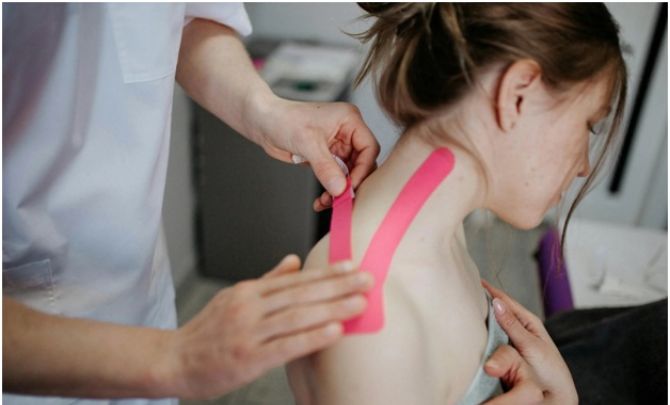Rotator cuff tears are common injuries that can significantly impact a person’s quality of life. These tears occur in the group of muscles and tendons that stabilize the shoulder joint. The shoulder is one of the most mobile joints in the body, making it susceptible to injuries. While many people associate such injuries with athletes, rotator cuff tears can happen to anyone, regardless of their activity level. Understanding the causes, symptoms, and available treatment options is essential for effective management and recovery.
Causes of Rotator Cuff Tears
Rotator cuff tears can arise from a variety of causes. One of the most significant contributing factors is age. As people grow older, the tendons in the rotator cuff begin to degenerate. This naturally occurring wear and tear often leads to tears. Additionally, repetitive overhead movements common in many professions and sports, such as baseball and swimming, can also cause rotator cuff injuries. Poor posture and muscle imbalances can place undue stress on the shoulder, heightening the risk of a tear. Moreover, acute injuries, such as falls or accidents, can result in significant damage to the rotator cuff as well. Individuals with certain pre-existing conditions, such as arthritis, are also more susceptible to these injuries. Understanding these causes can help individuals take preventive measures.
Signs and Symptoms of Rotator Cuff Tears
Recognizing the signs and symptoms of a rotator cuff tear is crucial for prompt treatment. Common indicators include pain in the shoulder, especially while lifting or reaching. This discomfort can sometimes radiate down the arm. Individuals may experience weakness in the shoulder, reducing the ability to lift objects or perform daily activities. A characteristic clicking or popping sensation during shoulder movement may also occur. Additionally, some people may notice pain at night, especially when lying on the affected side. Such persistent pain can disrupt sleep patterns, further affecting overall well-being. Diagnostic imaging, including MRI or ultrasound, is often employed to confirm the presence and extent of a tear, allowing for tailored treatment approaches.
Conservative Treatment Options
For many individuals, conservative treatment options can effectively manage rotator cuff tears. Rest is often the first step in recovery, allowing the body to heal naturally. Physical therapy plays a pivotal role in rehabilitation, focusing on strengthening the shoulder muscles and improving flexibility. Non-steroidal anti-inflammatory medications (NSAIDs) can alleviate pain and reduce inflammation. Ice therapy can also provide immediate relief by numbing the pain and decreasing swelling. In some cases, corticosteroid injections are recommended to provide temporary pain relief and facilitate participation in physical therapy. Individuals seeking comprehensive care should find out more about other methods that can enhance rehabilitation. Adopting a gradual return to activities is vital to prevent re-injury. Ultimately, these conservative approaches may lead to significant improvements in function without surgical intervention.
Surgical Treatment Options
When conservative treatments fail to provide relief, surgical options may be necessary. Surgery aims to repair the torn tendon and restore full shoulder function. The type of surgery performed often depends on the size and location of the tear. Arthroscopic surgery is commonly used, involving small incisions and the use of a camera for guidance. This minimally invasive approach often results in reduced recovery time. In cases of larger tears, open surgery may be required to allow direct access to the shoulder joint. Post-operative rehabilitation is crucial for recovery, often beginning with immobilization of the shoulder, followed by physical therapy to regain strength and mobility. The success rate for rotator cuff surgery is generally high, but it requires a commitment to a structured rehabilitation program.
Impact on Daily Life
The impact of a rotator cuff tear extends beyond physical limitations; it can affect emotional and mental health. Chronic pain may lead to frustration and anxiety, particularly if it hinders daily activities like dressing, cooking, or exercising. Relationships may also be strained as individuals struggle to keep up with responsibilities. Depending on the severity, care work, self-care, and recreational activities might be compromised. Understanding the holistic effects of rotator cuff injuries highlights the importance of seeking timely medical intervention and support. Engaging with healthcare professionals can provide strategies to manage both the physical and emotional challenges that arise during recovery.
Preventive Measures
Taking preventive measures can significantly reduce the risk of rotator cuff tears. Engaging in regular strengthening and flexibility exercises for the shoulder is beneficial. Proper warm-up before physical activities is essential, as it prepares the muscles and tendons, minimizing the likelihood of injury. Additionally, individuals should be mindful of their posture during daily activities and employ ergonomic tools when necessary. Modifying workspaces to ensure proper mechanics can further help prevent shoulder strain. Education on proper lifting techniques can also reduce the risk of acute injuries. Recognizing when to take a break or scale back on strenuous activities is vital for long-term shoulder health. By prioritizing preventive strategies, individuals can maintain shoulder integrity and function.

Rotator cuff tears are a prevalent concern that can drastically affect quality of life. Understanding the causes, recognizing the symptoms, and exploring treatment options are essential steps in managing this injury. Whether opting for conservative management strategies or surgical interventions, timely action can lead to improved outcomes. Furthermore, addressing both the physical and emotional aspects of recovery plays an integral role in restoring function and well-being. By implementing preventive measures, individuals can minimize their risk and ensure long-term shoulder health.
